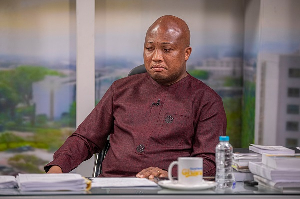It is anyone’s guess how the 32 teams in the 2010 World Cup will be grouped by the draw Friday in South Africa, but one thing is for sure: the event will elicit sightings of things as far-fetched as U.F.O.’s and the Virgin Mary’s image on a potato chip.
Soccer luminaries, with the help of the honorary hostess Charlize Theron, will pull plastic balls out of pots to determine the eight first-round groupings of four teams each. Someone will inevitably claim that the draw was rigged. No proof? No problem. Not since “Forrest Gump” have table tennis balls supposedly been so vulnerable to manipulation and sleight of hand.
Television networks around the world will be on alert. They will replay the video forward and backward, in regular speed and slow motion, seeking evidence of plots and schemes, as if this were a sporting equivalent of the Zapruder film.
At the draw for the 1990 World Cup in Italy, Sophia Loren picked a ball that placed the United States in the host team’s group. Considering that the Americans had not played in the World Cup in 40 years, this struck some as akin to putting the Yankees in the same group as the winner of the Little League World Series.
None other than the soccer legend Diego Maradona claimed the draw was rigged to favor the host Italians over defending champion Argentina. Those who saw conspiracy speculated that Loren had magnetized her rings to pick a certain magnetic ball out of the pot.
At the draw for the 2006 World Cup in Germany, the television network Sky Italia thought it saw duplicity in the way the former German soccer star Lothar Matthäus selected Italy’s group. The station claimed that the balls had been heated and cooled so that Matthäus knew which teams he was selecting as he placed Italy in a daunting group with the United States, the Czech Republic and Ghana.
“The Italians are mad if they think that,” Matthäus said at the time. “That is utter nonsense.”
Considering that Italy won the World Cup that year, Matthäus had a point.
Of course, soccer’s world governing body, known by its acronym FIFA, steadfastly denies that high jinks are involved. Outside experts say there is no proof that the process is illusory.
“We are not David Copperfield, and Siegfried and Roy,” Guido Tognoni, a former spokesman for FIFA, said in Las Vegas at the draw for the 1994 World Cup.
Yet conspiracy theories abound. In 2005, the issue was part of a final exam in a cryptology course at the University of Virginia.
Part of the suspicion comes because soccer is a global sport that evokes national passions, said Mike Woitalla, the executive editor of Soccer America magazine.
Americans do not usually root as a nation in a sporting sense, cheering instead for our alma maters and local professional sports teams. The Olympics are an exception, and the Super Bowl draws more interest in the commercials than the game. But much of the rest of the world reaches a fever pitch over soccer.
“In America, you might have fans from Boston thinking they were robbed by a bad call, but in soccer it’s an entire country feeling that somebody treated them unfairly,” Woitalla said. “It’s a fan’s feelings multiplied by millions.”
Conspiracy theories regarding soccer are likely to flourish readily in countries where authorities and elites have often failed the public, said Andrei Markovits, a professor of politics and German studies at the University of Michigan.
“I wouldn’t be surprised to see a much greater notion of conspiracy in countries like Argentina, Italy and Greece and much less in places like Sweden, Norway, Britain and Germany,” said Markovits, author of the forthcoming book, “Gaming the World: How Sports are Reshaping Global Politics and Culture.”
FIFA also has opened itself to charges of deception by arbitrarily changing the rules of the draw from one World Cup to the next. One time, performances in the two most recent World Cups are given priority in seeding teams. Another time, it is the three most recent World Cups that count. International rankings wax and wane in importance. Next time, who knows, the standard might be appearances on “Dancing with the Stars.”
And it does not help matters that Friday’s draw comes amid a sprawling match-fixing scandal involving club teams in Europe and soccer officials.
“I hate conspiracy theories,” Markovits said. “They’re an easy way out for people seeking explanations for complex things. That said, I don’t think the draw is rigged, but I’m less likely to completely dismiss it as a crackpot simplification than I would have been three weeks ago.”
In truth, the World Cup draw is not as entirely random as the weekly Powerball lottery. FIFA seeks geographic diversity in each of the eight four-team groups. And it gives the host nation a top seed, believing that local interest is boosted if the host team stays alive. No home team has failed to advance beyond the first round.
For the 2010 World Cup, the host, South Africa, will have a top seed even though it is ranked 86th in the world. Thus it will avoid such powers as Brazil, Germany and Argentina in group play.
“I never thought any of the draws were rigged,” said Bruce Arena, who coached the United States in the 2002 and 2006 World Cups. “The only thing that seems odd to me is how the host country gets decent draws. They never end up in the Group of Death.”
Well, almost never. Arena also coached the United States at the 1996 Atlanta Olympics. Upon realizing that the opening match was against Argentina, he lamented about American naïveté, saying, “We’re too stupid to fix a draw.”
Sports Features of Friday, 4 December 2009
Source: New York Times
In World Cup Draw, Conspiracy Theories Abound
Entertainment















